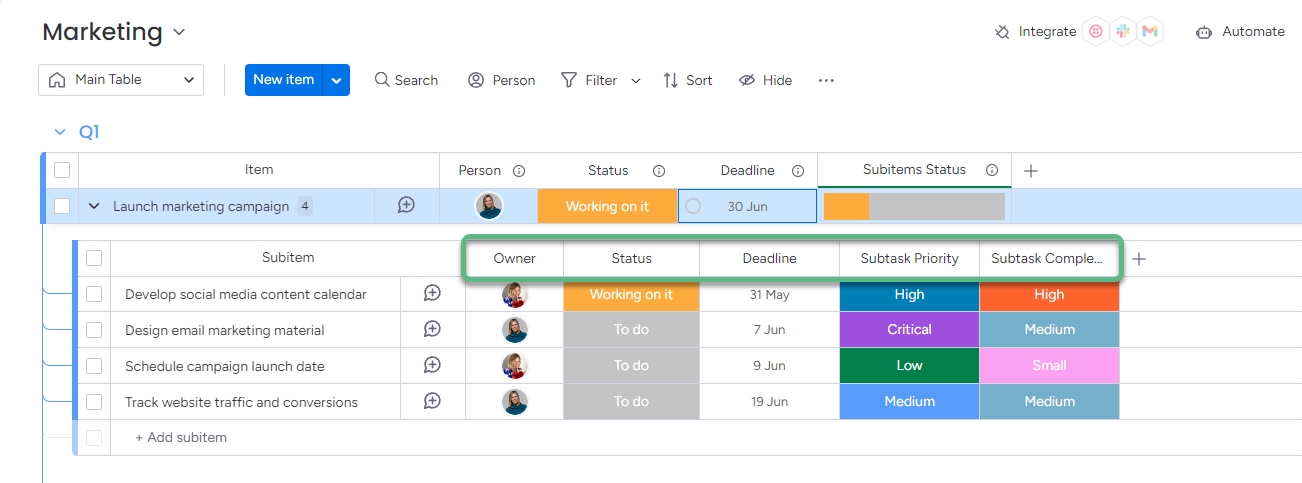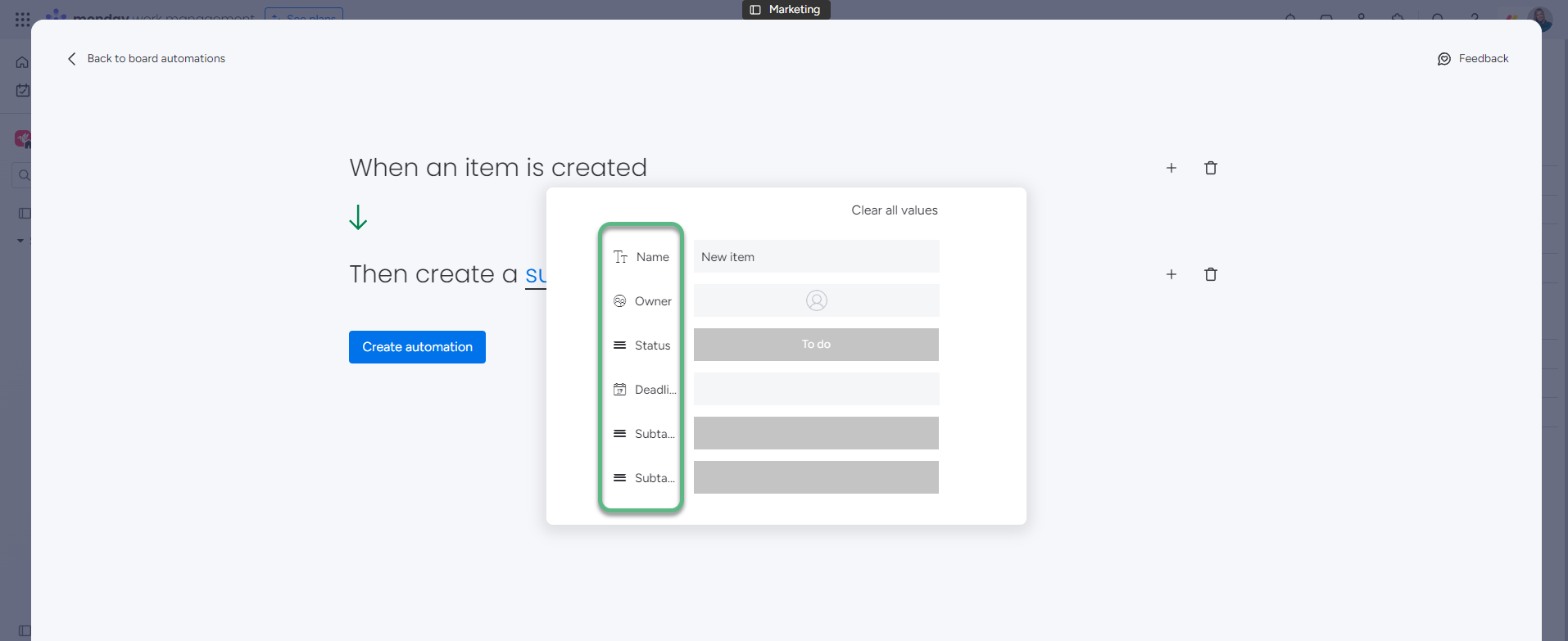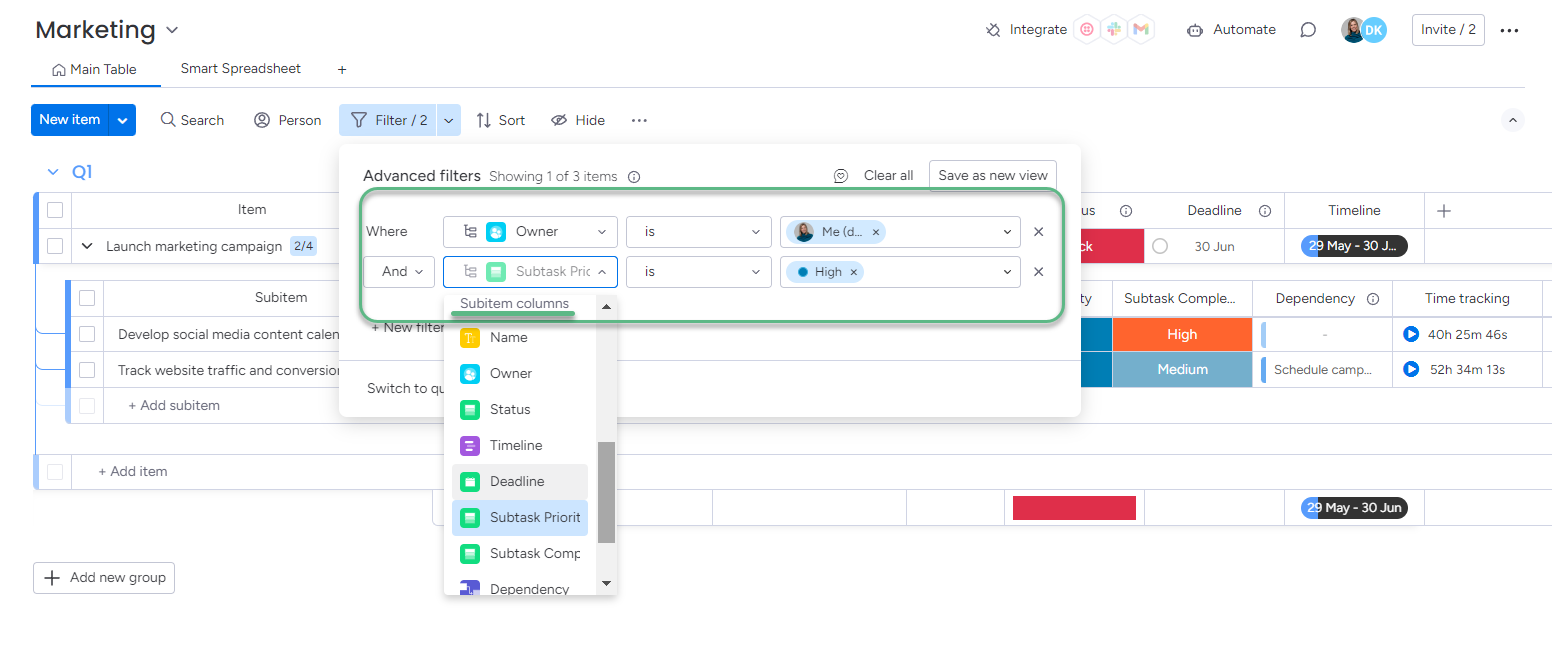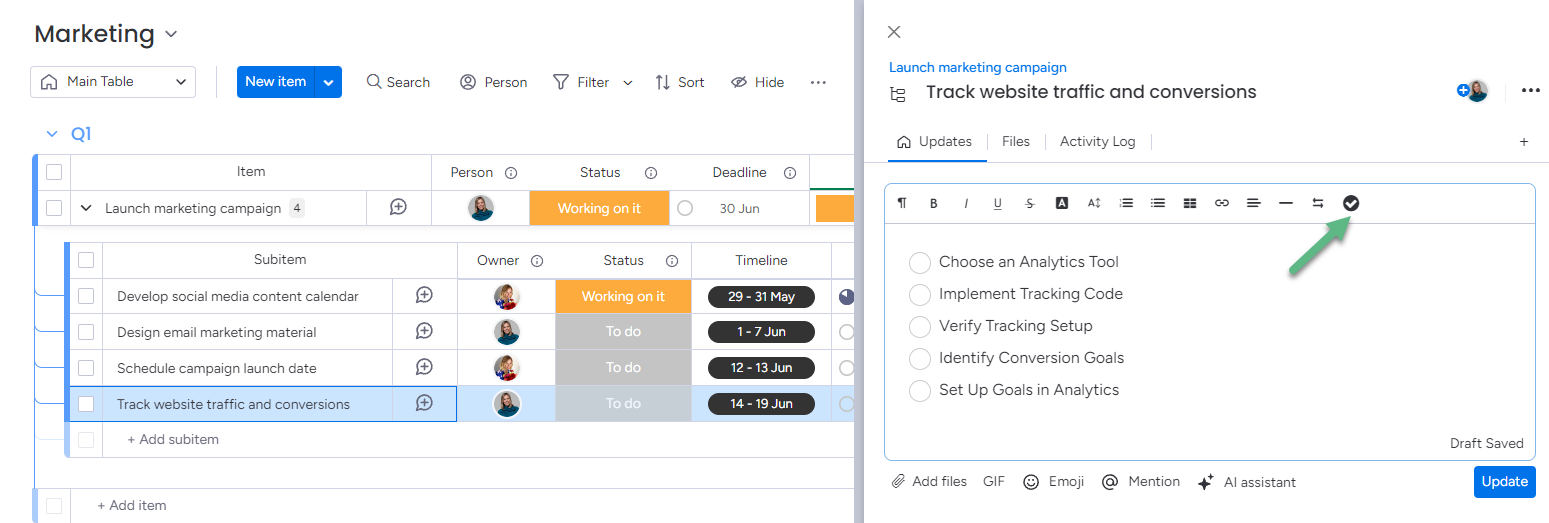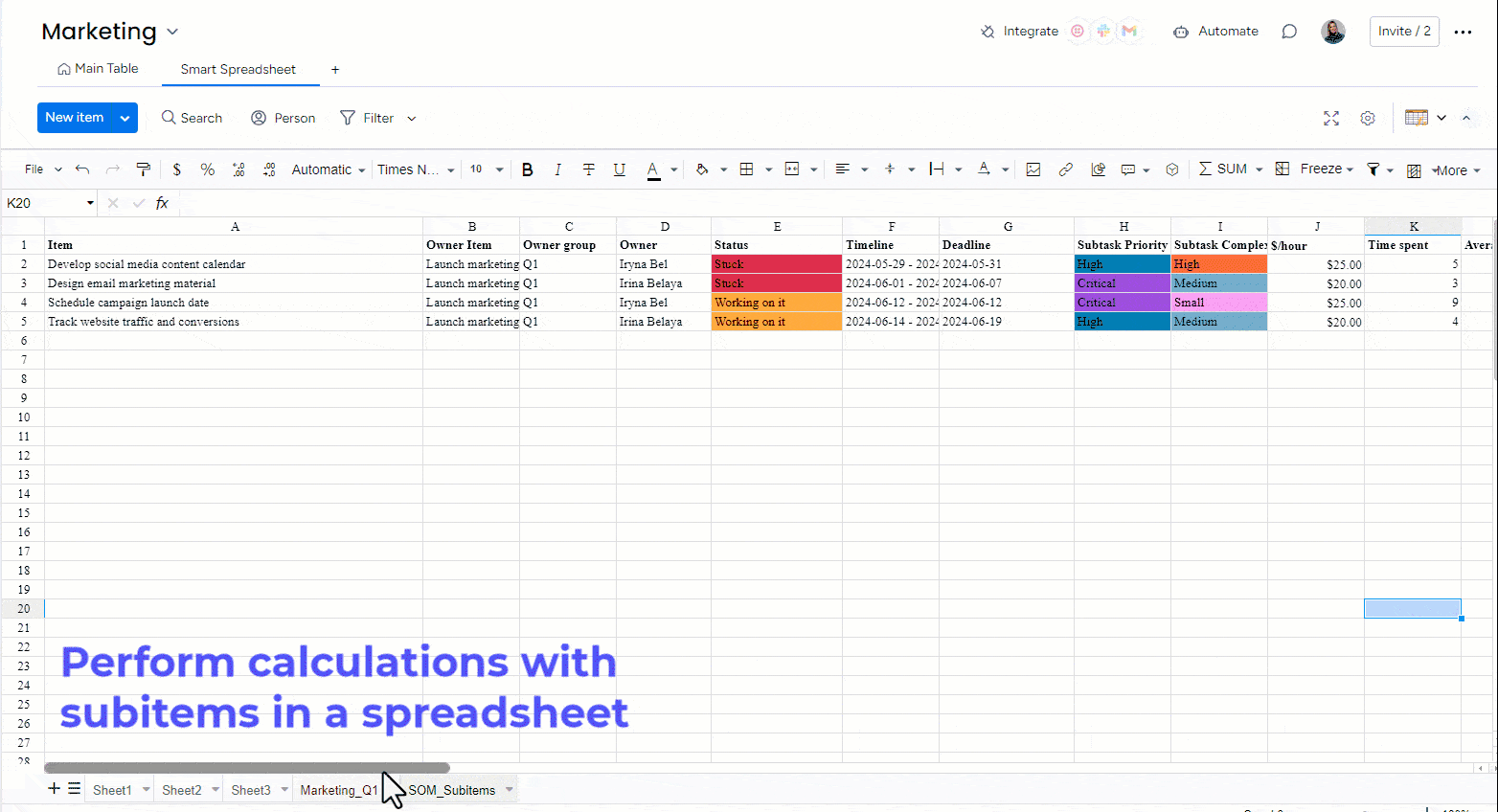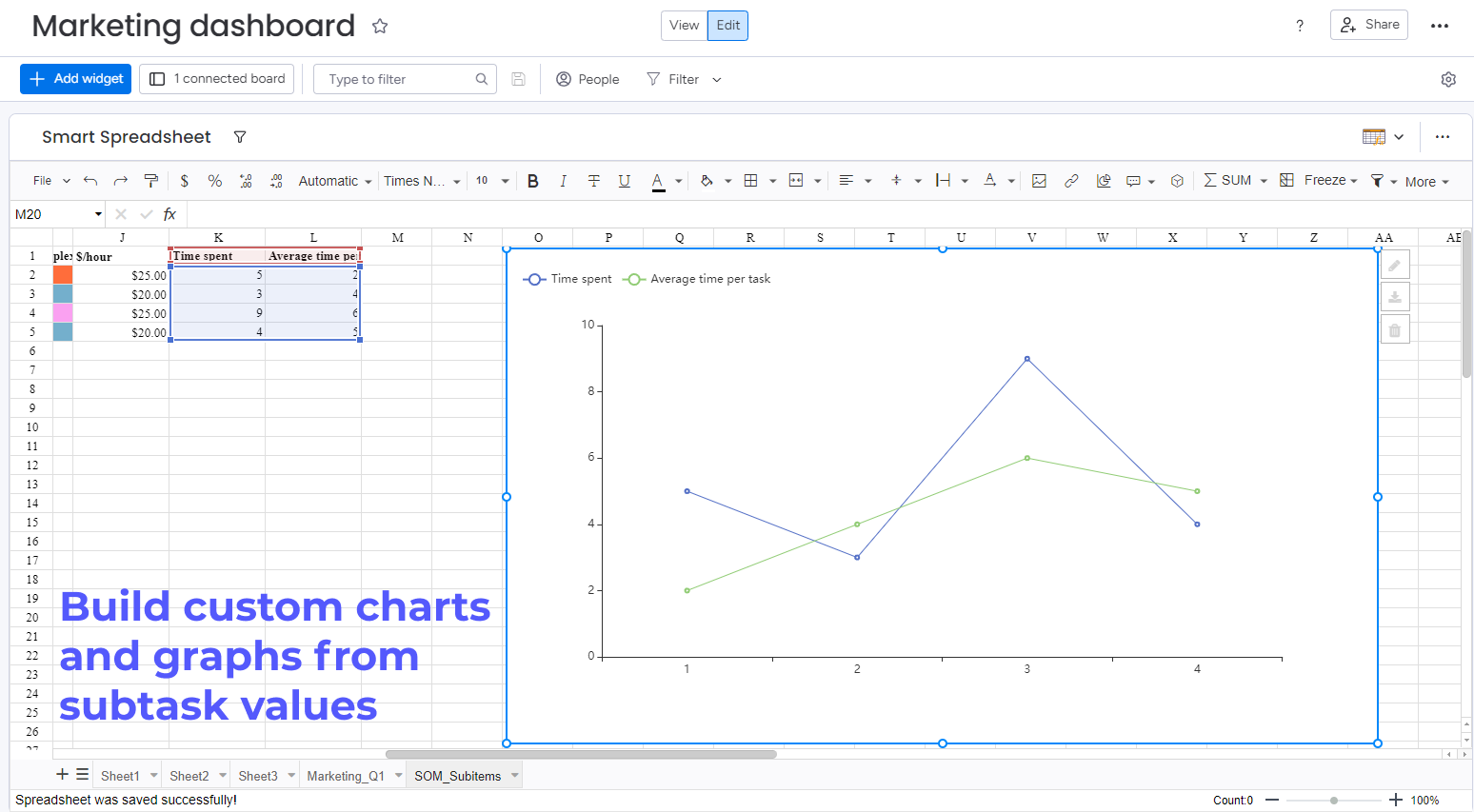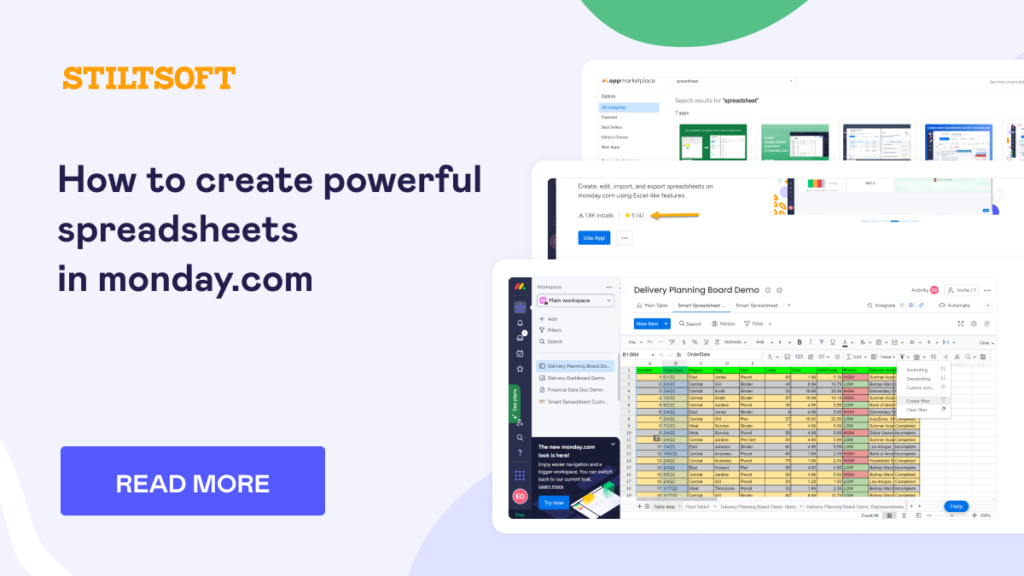Master Subtasks on Monday.com Like a Pro

Subtasks on monday.com are powerful tools for breaking down complex projects into manageable steps. They go beyond simple checklists, allowing you to store important information such as deadlines and budgets.
Take a marketing campaign launch, for instance. The “Launch marketing campaign” item might seem straightforward, but subtasks or, in other words, subitems provide a clear roadmap for executing this task. Here are some subitems that can help:
- Develop a social media content calendar
- Design email marketing materials
- Schedule campaign launch date
- Track website traffic and conversions
With subtasks, you gain a bird’s-eye view of the entire project, enabling you to control its implementation.
Tips on managing subtasks on monday.com
Basic tips
Although the monday.com guide lays out fundamental tips on managing subitems, we have a few additional pointers to enhance your experience.
Subitems templates
Unlike items, subitems do not automatically inherit the column configuration of their parent. This allows you to tailor the subitem structure to your specific needs. Let’s create a simple subitem column set: the Owner column indicates the person responsible for the task, the Deadline column highlights the due date, and the Status column can track the progress, priority, and complexity of each subtask.
Here’s a tip to save this subitem structure: Navigate to the Automation Center, click on Board Automations, and choose Add Automation. Set the trigger for “when an item is created” and the action to “create a subitem.” This automation will replicate the predefined subitem column structure when you add a new item to a board. It streamlines the process and ensures uniformity across your project.
If you need to follow the structure of the parent items, you can set it up by coping with parent columns when creating a subtask.
Intermediate tips
Here are some savvy techniques to further optimize your workflow with subtasks on monday.com.
Subitem dependencies
In complex projects, tasks often rely on the completion of preceding steps. You can set up the subtasks sequence by adding the “Dependency” column. Then, you can visually represent the dependencies on a Gantt chart view in conjunction with the “Timeline” or “Deadline” columns.
Please remember to update the Gantt chart settings to include subitems.
Filtering subitems
To create more personalized views tailored to their specific needs, filter your board by subitems. For instance, you can filter high-priority sub-tasks assigned to you to determine what to work on first. This can save significant time and help you focus on what matters most.
Sub-subitems
Some tasks can be quite complex and require an extra level of detail. Although monday.com doesn’t offer an additional hierarchy layer, there’s a clever workaround. You can use the checklists feature to add sub-subitems in a subitem update section.
Pro tips
As your proficiency with subitems grows, you may encounter scenarios where the native functionality falls short of your requirements. Some of the key limitations for subitems on monday.com include:
- Not all the dashboards support subitems.
- Formulas in subitems can’t pull data from connected items.
- Functions for aggregating subitems are not directly supported. The subitems rollup feature helps but can’t show averages, max values, min values, counts, or perform more advanced calculations.
- Conditional formatting is limited. You can’t combine multiple conditions within a single formula.
How to overcome the subtasks limitations
Let’s get back to our case. As a head of marketing, you need to analyze the campaign performance results. Due to the limitations mentioned, the most efficient way to do this is to auto-import your board with subitems into the Smart Spreadsheet for monday app. By leveraging the power of the spreadsheet, you can:
- Perform more complex calculations with subitems and refer to parent items’ values
- Apply advanced conditional formatting
- Get auto-updates from the board
In our case, the app helps us determine the total costs for a campaign launch and identify tasks that took longer than anticipated by applying conditional formatting.
Subtask analysis empowers you to optimize future campaigns and allocate resources more efficiently.
Additionally, you can build custom charts and visualize subtask values on a dashboard for more insights.
By utilizing monday’s hidden features and the advanced subitem management capabilities of Smart Spreadsheet, you can focus on delivering results efficiently and quickly without being hindered by platform limitations.
















